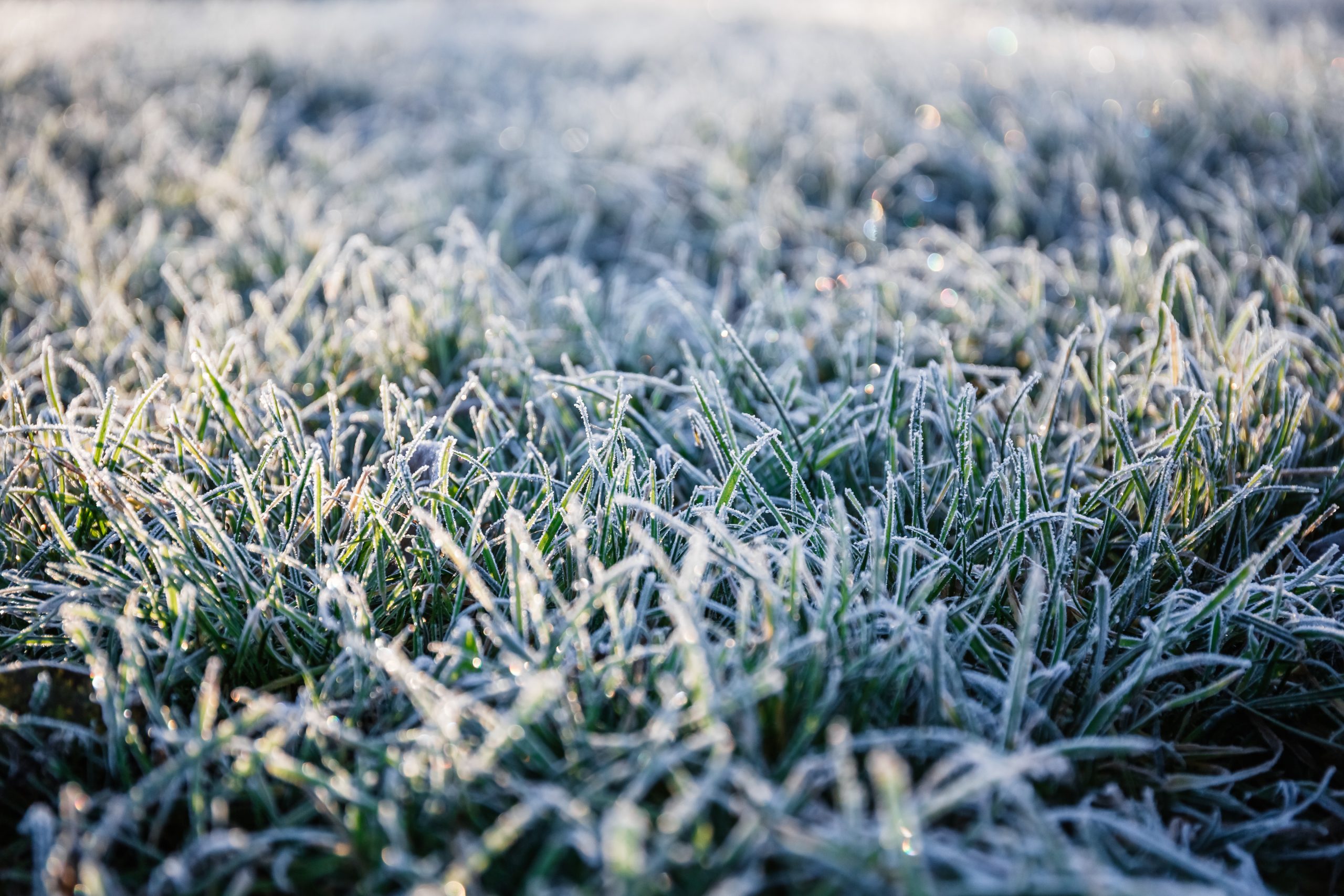Waking up to a frost-covered lawn may sound cozy, but it can be concerning to homeowners who are afraid the frost will damage their yards. Understanding frost will help ease worries about its effect on grass.
Conditions must align just right to form frost. Cold temperatures are an obvious prerequisite, but clear skies and low winds also promote frost development. Cold air sinks because it is heavier than warm air, which is why frost typically forms close to the ground. If the grass becomes colder than the air around it, then atmospheric moisture can freeze on the grass in the form of frost.
What about what happens inside of grass during a frost? The cold temperatures can cause water within the plant to freeze and expand. This freezing and expansion process can rupture cell walls, especially under pressure from traffic.
Therefore, the best way to protect a lawn from frost damage is to avoid walking on it while it has a layer of frost. As described above, plant cells are already under pressure from freezing temperatures during a frost. Adding physical pressure from foot traffic can encourage the cell walls to rupture. Ultimately, frozen grass blades are brittle and more likely to break under pressure than bend.
Avoiding traffic on a frosted lawn is doable, but how can you plan ahead to accommodate frost? Predicting the first and last frost of the spring is harder than it might seem because it involves more than just short-term temperature forecasts. As discussed earlier, frost is a result of various environmental factors that your weather app probably doesn’t show. That’s why a resource like an almanac is a good way to predict the first and last frost dates in your area.
Once you have an idea of the last frost in your area, you can plan the first mowing of the season. It’s best to wait until after the last hard frost to make the first cut. Mowing exposes freshly cut grass blades to the environment and its conditions, including freezing temperatures. Therefore, mowing too early can cause setbacks to growth. It’s also a good idea to make the first cut of the season short while still following the one-third rule. Mowing a lawn short allows sunlight to reach the soil better and helps raise the soil temperature. The increased sun exposure and soil temperature will help with photosynthesis and spring green-up.
Likewise, time the first spring fertilizer application relative to the last frost. If you fertilize too early, you’ll force the grass to use its stored carbohydrates for new growth. Then, in the case of a frost after you fertilize, the plant will have vulnerable new growth and depleted carbohydrate storage to help it recover. Ultimately, a frost could weaken a plant in this situation.
By following the above recommendations, you can prevent lawn damage from frost. Avoid walking on the grass while it has frost on it, use a reliable source to predict the timing of frost, and don’t mow or fertilize too early before the last hard frost. With these precautions, grass should be able to endure frost and come out healthy on the other side.












